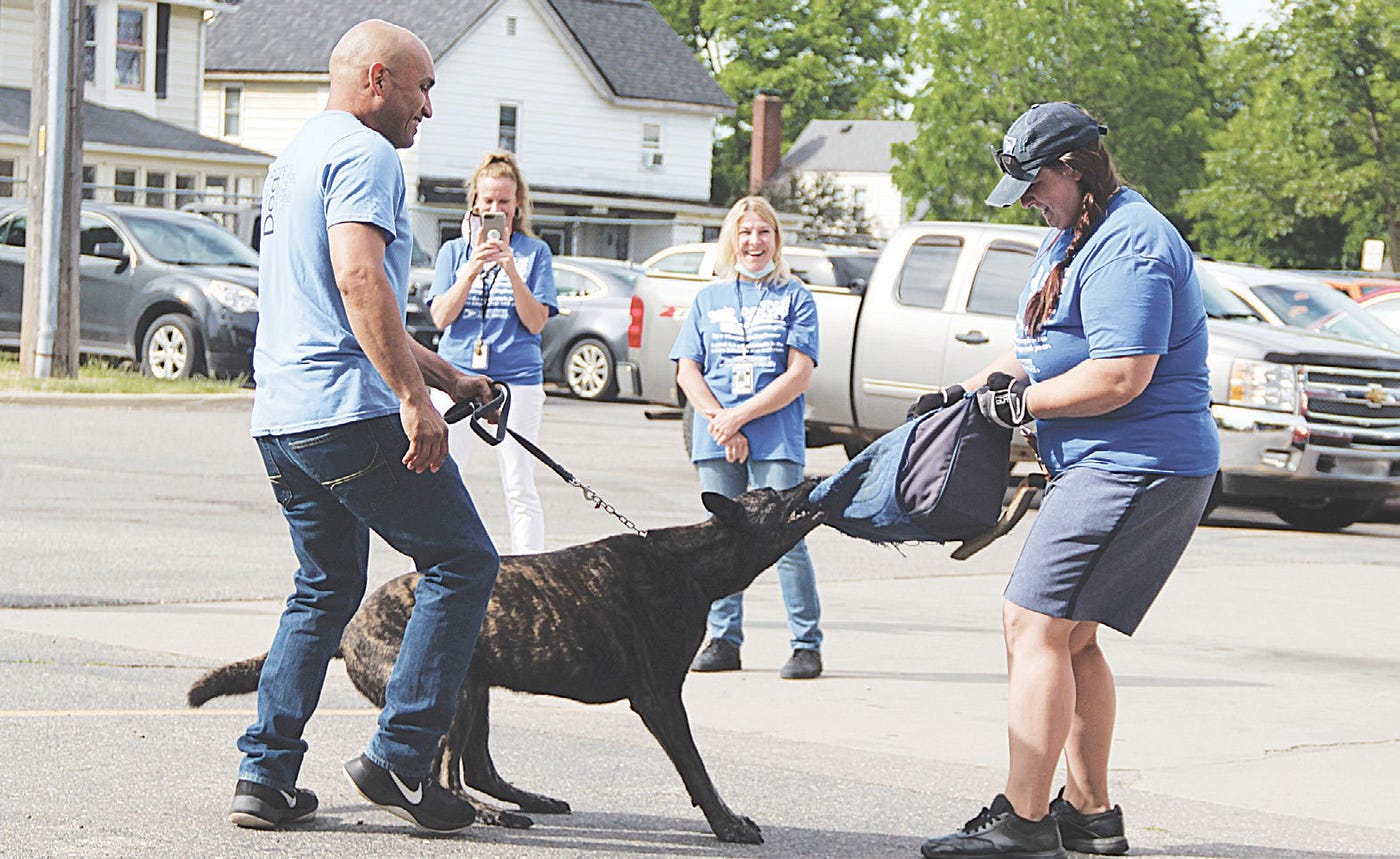Dog bites are a serious concern for package carriers. Every day, delivery personnel face the risk of encountering aggressive dogs, leading to potential injuries and disruptions in service. Understanding how to prevent these incidents is crucial for the safety of carriers and the satisfaction of customers. In this guide, we’ll explore effective strategies for preventing dog bites and ensuring safe deliveries.
How You Can Understand the Risk?
Dog bites can happen in a flash, turning a routine delivery into a dangerous situation. Did you know that over 4.5 million people are bitten by dogs each year in the United States alone? Among these, package carrier dog bite prevention are at a higher risk due to their frequent visits to homes and properties with dogs. By understanding the risks and adopting preventive measures, we can significantly reduce the chances of dog bite incidents.
Why Dogs Bite
Dogs bite for various reasons, and understanding these can help carriers better navigate their encounters. Common reasons include:
- Territorial Behavior: Dogs are naturally protective of their homes and may see carriers as intruders.
- Fear: Some dogs bite out of fear, especially if they are startled by sudden movements or noises.
- Pain or Illness: A dog in pain or suffering from an illness may bite if they feel threatened or uncomfortable.
- Lack of Socialization: Dogs that haven’t been properly socialized may react aggressively to unfamiliar people.
Knowing these triggers can help carriers approach dogs more safely and avoid actions that may provoke an attack.
Recognizing Warning Signs
Before a dog bites, it often displays several warning signs. Learning to recognize these signals can prevent an incident. Key warning signs include:
- Growling or Barking: A dog that’s growling or barking aggressively is warning you to stay away.
- Raised Hackles: The hair on a dog’s back standing up indicates arousal and potential aggression.
- Rigid Body Posture: A stiff, rigid posture can signal that a dog is ready to attack.
- Avoiding Eye Contact: A dog that avoids direct eye contact but keeps you in its sight is showing anxiety and potential aggression.
By paying attention to these signals, carriers can take steps to de-escalate the situation and avoid being bitten.
Best Practices for Package Carriers
There are several best practices that package carrier dog bite prevention can adopt to minimize the risk of dog bites. These include:
- Stay Calm and Confident: Dogs can sense fear and anxiety. Approaching them with calm confidence can help reduce their aggression.
- Avoid Sudden Movements: Sudden movements can startle a dog and provoke an attack. Move slowly and deliberately.
- Keep a Safe Distance: Maintain a safe distance from dogs whenever possible. If a dog is loose, do not approach the property.
- Use Barriers: Use the fence or gate as a barrier when delivering packages to homes with dogs.
These practices can help carriers stay safe and prevent dog bite incidents.
Using Technology to Stay Safe
Technology can be a valuable tool in preventing dog bites. Some useful technologies include:
- GPS Tracking Apps: These apps can provide information about known aggressive dogs in the delivery area.
- Delivery Management Software: Some software solutions offer features that alert carriers to homes with dogs, allowing them to take precautions.
- Dog Deterrent Devices: Ultrasonic devices can deter aggressive dogs without causing harm.
Incorporating these technologies into daily routines can enhance the safety of package carriers.
Training and Education
Ongoing training and education are crucial for package carrier dog bite prevention. Companies should provide regular training on:
- Dog Behavior: Understanding common dog behaviors and how to respond to them.
- Safety Protocols: Step-by-step procedures for dealing with aggressive dogs.
- Emergency Response: How to handle a dog bite incident, including first aid and reporting.
Training programs can empower carriers with the knowledge and skills needed to prevent dog bites.
Communication with Dog Owners
Effective communication with dog owners is another key strategy. Carriers should:
- Notify Owners of Delivery Times: This allows owners to secure their dogs during deliveries.
- Request Information: Ask owners about their dogs’ behavior and any special instructions.
- Leave Clear Instructions: If unable to deliver due to a dog, leave a note explaining the situation and requesting a reschedule.
Good communication can help ensure that dogs are secured and carriers can deliver packages safely.
Protective Gear and Equipment
Using protective gear and equipment can provide an additional layer of safety. Recommended items include:
- Dog Repellent Spray: A safe, non-lethal spray that can deter an aggressive dog.
- Protective Gloves: Heavy-duty gloves can protect hands from bites.
- Sturdy Footwear: Durable shoes can prevent injuries from dog bites to the feet.
Equipping carriers with these items can help them feel more secure and prepared.
Legal Aspects and Reporting Incidents
Understanding the legal aspects and proper reporting procedures is essential. Carriers should:
- Know the Law: Familiarize themselves with local laws regarding dog bites and liability.
- Report Incidents: Promptly report any dog bite incidents to their employer and seek medical attention if necessary.
- Document Everything: Keep detailed records of the incident, including photos and witness statements.
Knowing the legal steps can ensure that carriers are protected and incidents are properly handled.
Creating a Dog-Friendly Delivery Environment
Creating a dog-friendly delivery environment can also reduce the risk of bites. Tips for achieving this include:
- Designated Drop-Off Zones: Establishing safe areas for package drop-offs away from dogs.
- Owner Cooperation: Working with dog owners to ensure dogs are secured during delivery times.
- Public Awareness Campaigns: Educating the public about the importance of securing dogs during deliveries.
These efforts can foster a safer environment for both carriers and dogs.
Dealing with Aggressive Dogs
In cases where carriers encounter aggressive dogs, specific strategies can help:
- Stand Your Ground: Do not run, as this can trigger a chase response.
- Use an Object as a Barrier: Place an object like a bag or clipboard between you and the dog.
- Slowly Back Away: Gradually retreat without turning your back on the dog.
These techniques can help de-escalate the situation and prevent an attack.
The Role of Delivery Companies
Delivery companies play a vital role in preventing dog bites. They should:
- Provide Training: Offer comprehensive training programs for their carriers.
- Equip Carriers: Ensure carriers have access to protective gear and technology.
- Support Reporting: Establish clear reporting procedures and support carriers in the aftermath of an incident.
By prioritizing safety, companies can help reduce the risk of dog bites.
After a Dog Bite Incident
If a dog bite incident occurs, immediate steps should be taken:
- Seek Medical Attention: Even minor bites should be examined by a healthcare professional.
- Report the Incident: Inform the employer and complete any necessary reports.
- Follow Up: Monitor the injury for signs of infection and follow any medical advice.
Proper post-incident care is crucial for recovery and preventing complications.
Conclusion
Preventing dog bites is essential for the safety and well-being of package carrier dog bite prevention. By understanding dog behavior, recognizing warning signs, and adopting best practices, carriers can significantly reduce the risk of incidents.
Effective communication, training, and the use of protective gear further enhance safety. Delivery companies must support their carriers by providing the necessary resources and training. Together, these strategies create a safer environment for both carriers and dogs, ensuring smooth and secure deliveries.
FAQs
What should I do if a dog approaches me while delivering a package?
Stay calm and avoid sudden movements. Use a barrier, such as your delivery bag, to protect yourself and slowly back away.
How can I recognize if a dog might be about to bite?
Look for warning signs like growling, raised hackles, a rigid body, and avoiding eye contact. These signals indicate a dog might be preparing to bite.
Are there any tools or devices that can help prevent dog bites?
Yes, tools like dog repellent spray, ultrasonic deterrent devices, and protective gloves can help prevent dog bites.
What legal steps should I take if bitten by a dog while on duty?
Seek medical attention immediately, report the incident to your employer, and document all details of the incident. Familiarize yourself with local laws regarding dog bites and liability.
How can delivery companies help in preventing dog bites?
Delivery companies can provide training on dog behavior and safety protocols, equip carriers with protective gear, and establish clear incident reporting procedures.



